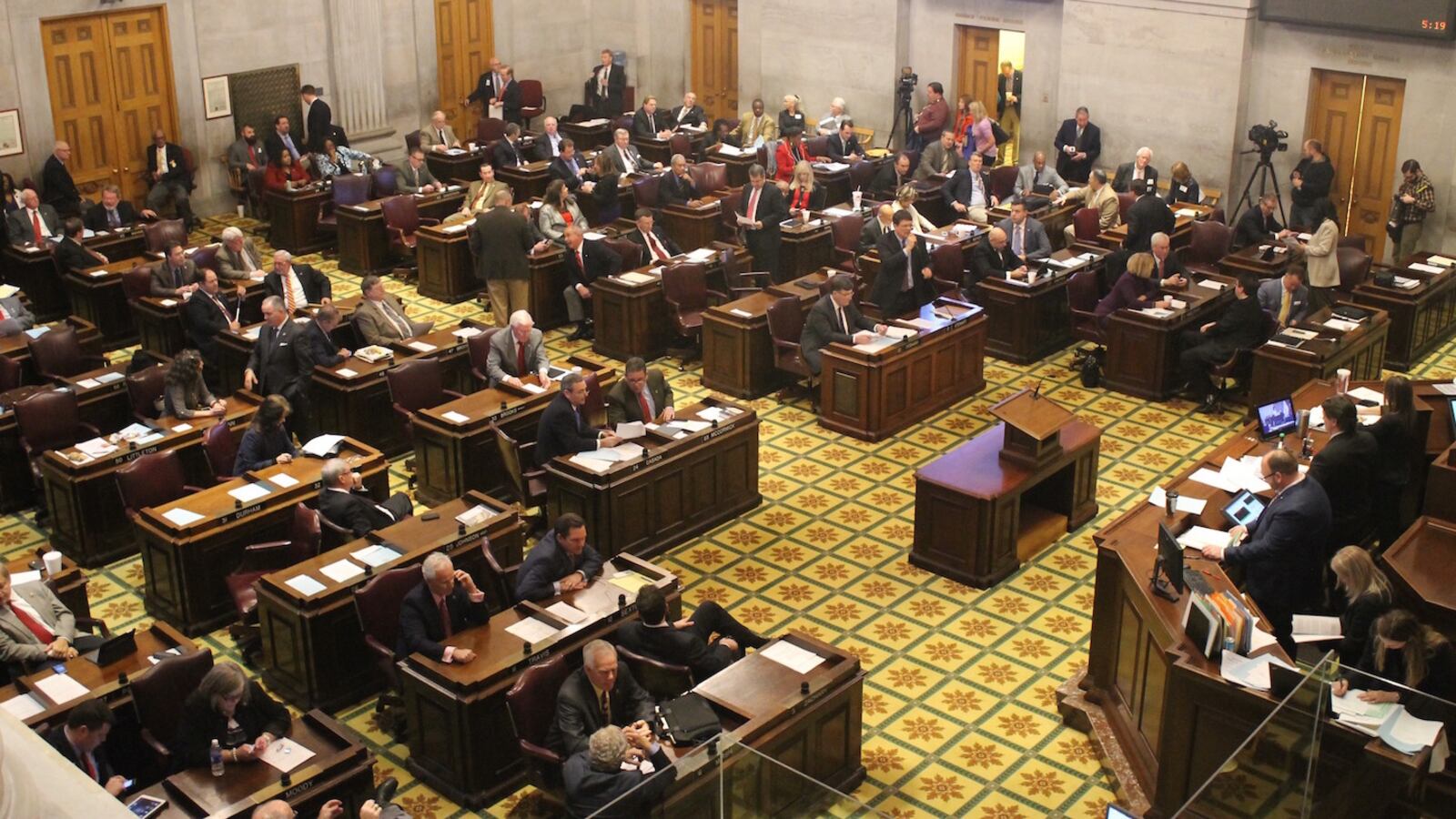The House unanimously passed a bill Monday to increase its investment in K-12 public education by an unprecedented $220 million, even as some lawmakers worried that the increase won’t reach enough schools or teachers’ paychecks.
The bill, part of Gov. Bill Haslam’s budget plan, would boost spending for school technology, teacher salaries, and programs for English language learners during the next school year. It also codifies the funding formula used by the state for the last nine years.
The proposal is expected to pass the Senate on Wednesday.
While the magnitude of the spending increase is apparent, the impact on individual districts is unclear. The bill stipulates that the state cannot give districts less money for education than it did in the 2015-16 school year — unless school enrollment has declined, as it has in Shelby County Schools, the state’s largest district, in Memphis.
Rep. G.A. Hardaway of Memphis asked how and if the spending increase would buoy Shelby County Schools, which anticipates at least $50 million in budget cuts next year and has filed a lawsuit against the state for more funding. Rep. Mark White, also of Memphis, answered that he wasn’t sure of the exact dollar amount that would go to Shelby County, but that the proposed state budget could only help.
“Shelby County Schools will do much better under this plan than if we did nothing,” White said.
It’s also unclear how much, or if, the spending boost will raise teacher salaries in urban districts.
Rep. John Ray Clemmons of Nashville said he celebrates much of the bill, but dislikes the provision that keeps the state’s contributions to teacher salaries at 70 percent, rather than the 75 percent outlined under BEP 2.0, the Basic Education Program funding plan adopted by the General Assembly in 2007 but never fully funded due to the economic recession.
Clemmons said the governor’s spending plan doesn’t accommodate districts such as Metro Nashville Public Schools or Williamson County Schools, which already rely solely on local money to fund hundreds of teaching positions. He noted that rural and urban districts alike are pursuing legal action against the state for more money. Metro Nashville, the state’s second-largest district, is also weighing a lawsuit, depending on the outcome of the new spending plan.
“This is going to be the first governor who passes a bill that creates lawsuits from small schools and large school districts,” Clemmons said, declaring the bill “BEP No.”
Although Haslam is proposing increased spending for teacher salaries by $105 million, not all teachers would see that boost in their paycheck. The bill stipulates that funds appropriated for instructional salaries and wages must be spent for that purpose if a district’s average salary is below the statewide salary. But districts where the salary exceeds the statewide average salary, such as Shelby County Schools, don’t have to spend the money on teacher salaries and instead can funnel it to other areas of need.
Districts that are losing student enrollment are permitted to reduce their overall spending on teacher salaries, while all other districts must at least maintain their current levels. By law, however, districts cannot cut salaries of existing employees.
Shelby County Schools also is bracing to lose $31 million in state funding through the cost differential factor (CDF), which has been a bonus for districts with high costs of living but would be phased out under the bill. But Stephen Smith, deputy commissioner, said that won’t hurt Shelby County Schools in the end.
“If we were not making any CDF adjustments, we would have to reduce improvements designated for other areas — most notably in the salary component, of which Shelby receives a large portion,” he said in an email. He noted that state law maintains districts at 2015-16 funding levels. “This means no district will receive less funds than this year due to CDF changes and Shelby County will certainly see a significant state funding improvement from this legislation and budget,” he said.
Corrections & clarifications: April 12, 2016: A previous version of this story incorrectly stated that Gov. Haslam has proposed increased spending for teacher salaries by $178 million. The actual figure is $105 million. The updated story also clarifies that, by law, districts cannot reduce teacher salaries. The story deletes a paragraph that incorrectly stated that a budget amendment related to the cost differential factor was sponsored by Rep. Charles Sargent. It was not. The penultimate paragraph also clarifies that the budget’s cost differential factor is related to local cost of living, not student enrollment. The story was updated with quotes from deputy commissioner of education Stephen Smith.

